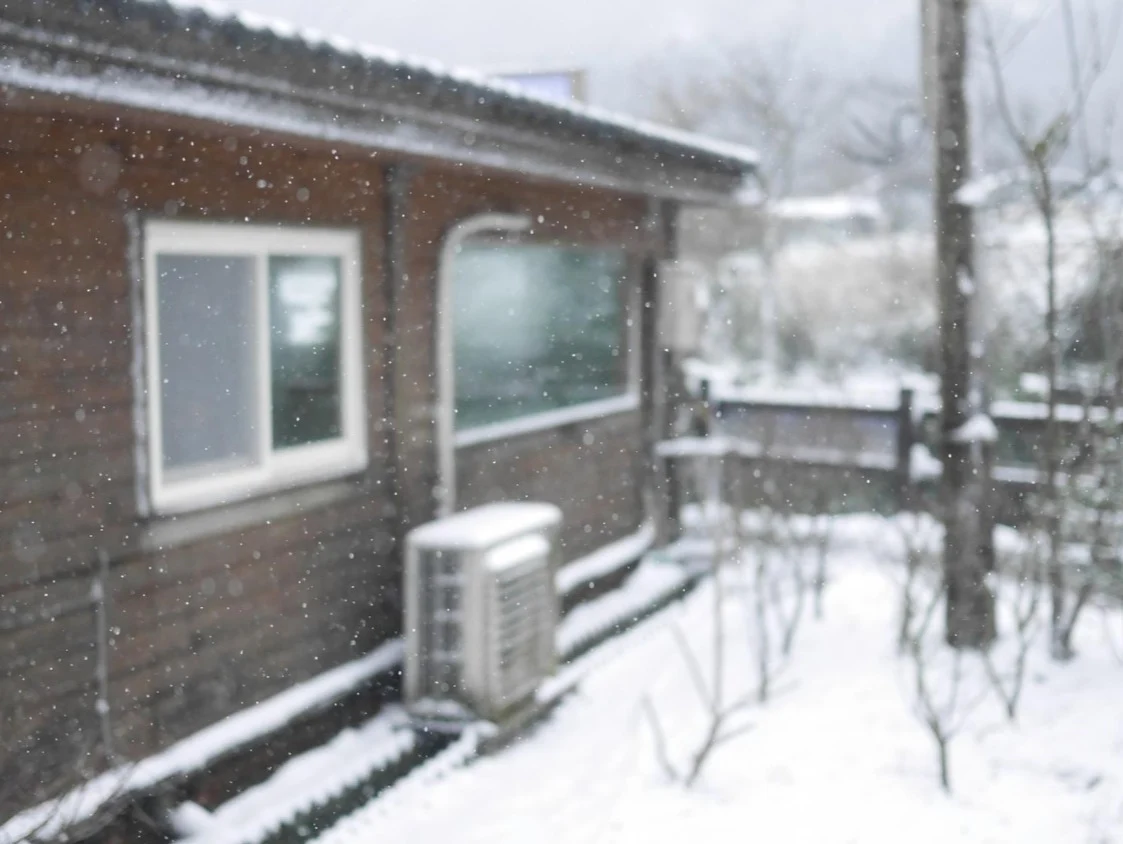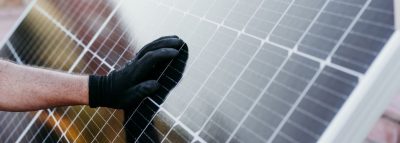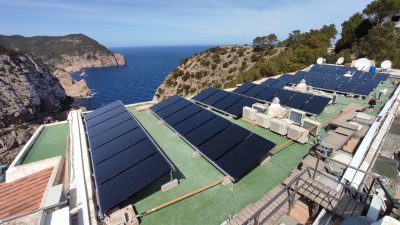Innovations in technology provide us with more efficient and affordable solutions for comfortable homes. Air source heat pumps are emerging as a top choice and, although many people believe that they are only suitable for temperate climates, modern air source heat pump efficiency in winter can be surprising.
So, do air source heat pumps work in winter? Let’s go through their main features and their performance under different conditions to check if they are a suitable option for your home.
What are air source heat pumps and how do they work?
An air source heat pump is basically an air-conditioning system that absorbs air from outside and uses it to acclimatise the interior of the space.
Basic functioning of an air source heat pump
How does it work? It absorbs the outside air and circulates it through a refrigerant cycle, applying the principles of thermodynamics, so the air is cooler when it is expelled indoors.
Air source heat pumps in cold weather reverse the cycle, so they absorb cold air and make it warmer.
Types of air source heat pumps
When it comes to setup, there are two main types of ASHP systems. The first is an air-to-air system, which distributes heat directly into the home through fans or ventilation ducts. The second is an air-to-water system, which transfers heat to water for use in radiators, underfloor heating, or domestic hot water, the most common air source heat pumps in cold climates.
Do air source heat pumps work in cold climates?
Yes, modern cold climate air-source heat pumps work at really low temperatures.
Performance in sub-zero temperatures
Modern cold-climate air source heat pumps can operate efficiently at temperatures as low as -20°C, and some models can handle even lower situations. These units are specifically designed to perform under harsh conditions.
Misconceptions about heat pumps in cold weather
Modern air source heat pumps are engineered to handle a wide range of temperatures, so it is not true that they stop working at 0ºC.
Contacting experts for an adequate installation and selecting the right unit for each home’s location and needs is a guarantee for success.
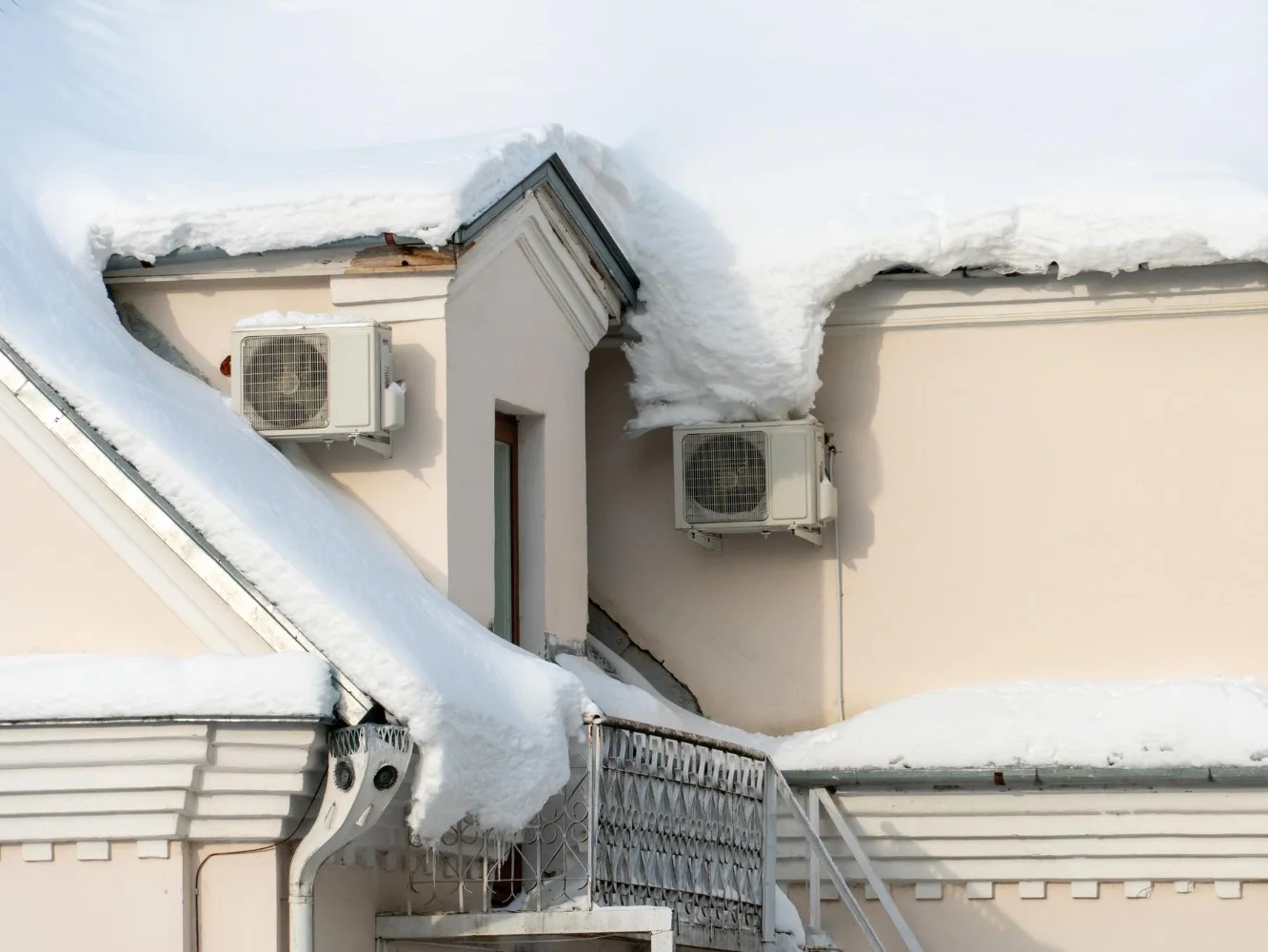
Air source heat pump efficiency in winter
When considering this air-conditioning system, it is important to notice its efficiency throughout the year.
Factors affecting efficiency in cold weather
Air source heat pump efficiency vs. temperature depends on several factors related to not only the climate but also the features of each space:
- Colder air has less heat to extract, which can slow down its performance.
- Well-insulated homes lose less heat and are easier to acclimate.
- The size of the system has to be right for its efficiency to be optimum.
Technological improvements for winter use
Advancements such as variable-speed compressors, enhanced coil designs, and cold-weather refrigerants (like R-410A) have made winter performance considerably better.
Many air source heat pumps now feature inverter technology that adjusts output based on demand, improving both comfort and efficiency.
Comparing air source heat pump efficiency vs outside temperature
Let’s review some examples of air source heat pump efficiency vs. outside temperature.
Efficiency drop-off curves
Heat pump efficiency is measured by the Coefficient of Performance (COP). As the temperature drops, the COP decreases:
- Around 10°C, the Coefficient of Performance might be 3 or 4.
- When temperatures are around 0°C, COP usually varies between 2 and 3.
- Below -10°C, COP may drop to 1.5 or 2.
This proves its efficiency declines along with temperature, but the system still provides more energy than it consumes
Ideal operating ranges by climate zone
In Mediterranean mild climates like Ibiza, standard air-source heat pumps (ASHPs) perform efficiently year-round. The moderate winter temperatures make high-efficiency standard models sufficient without the need for extreme cold-climate units.
Experts in air source heat pumps for cold climates recommend advanced defrost technology and reliable sub-zero performance for northern regions, but for Ibiza’s conditions, well-designed standard ASHPs provide excellent results.
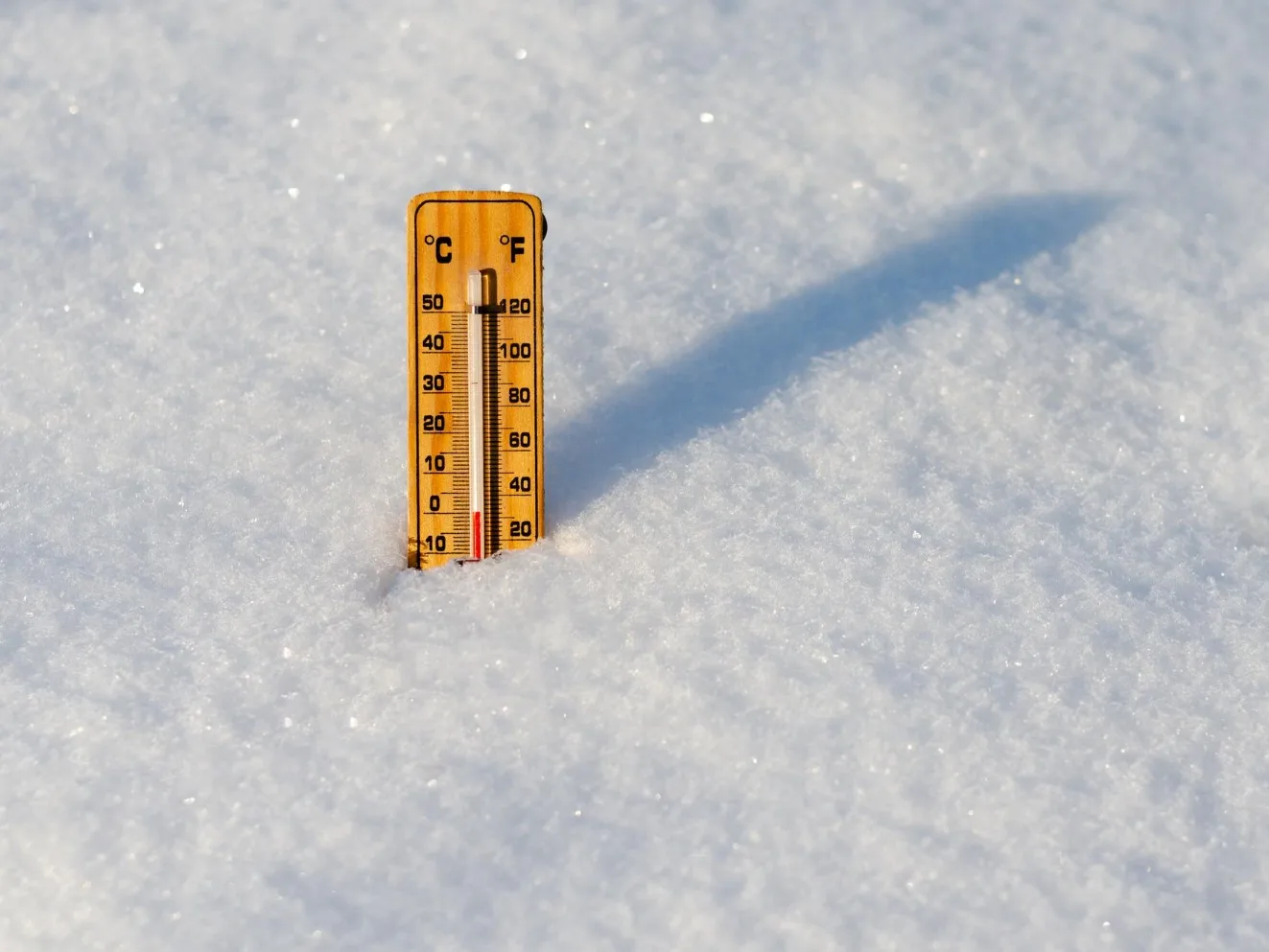
What are cold climate air-source heat pumps?
Cold climate air-source heat pumps are improved air source heat pumps that include specific features to increase efficiency at low temperatures.
Key features that make them suitable for cold climates
Cold climate heat pumps feature an enhanced inverter compressor or a variable-speed compressor, defrost cycles to prevent ice buildup, low ambient temperature refrigerants and, in some models, backup resistance heating or auxiliary heat.
How they differ from standard heat pumps
Unlike standard systems, these maintain their rated capacity at lower temperatures.
Pros and cons of using heat pumps in cold climates
Heat pumps are a popular solution for heating and cooling not only in homes, but also in offices, hotels, shops and other commercial spaces. Their energy efficiency and versatility make them a smart choice even in colder climates, although there are some limitations to keep in mind during harsh winters.
Advantages in efficiency and sustainability
Using heat pumps in cold climates means:
- Lower operating costs than other systems and just one system to cover all year needs.
- Reduced carbon footprint.
- Energy and money savings.
Limitations to consider in harsh winters
For colder winters, it can have some disadvantages
- A bigger initial expense.
- Decreased efficiency during the coldest months.
How to maximize efficiency of a heat pump in winter
To get the most out of a heat pump during winter, it’s important to follow a few key practices. Proper use and maintenance can significantly improve performance, reduce energy consumption and keep indoor spaces comfortable even on the coldest days.
Best installation practices
To maximize efficiency, it is recommended to work with professional installers to choose the right location for the outdoor unit and make sure the system is properly sealed and insulated.
Smart thermostat and backup systems
A smart thermostat can optimize performance. Backup systems like resistance heating and auxiliary heat can supplement heat during cold peaks.
Regular maintenance and troubleshooting tips
Maintenance is crucial, so make sure you clean and replace filters and schedule professional check-ups to avoid problems.
Choosing the right air source heat pump for cold weather
Choosing the right air source heat pump for cold climates is essential to ensure reliable performance and energy savings. Not all models are designed to handle freezing temperatures efficiently, so it’s important to consider factors like capacity, defrost systems and manufacturer specifications.
Features to look for
To check efficiency, the most common metrics are SEER (Seasonal Energy Efficiency Ratio) and HSPF (Heating Seasonal Performance Factor). Make sure the system sizing and features match the requirements of the home.
Recommended brands and models
Brands leading in cold climate performance are Mitsubishi, Fujitsu and Daikin. Units with the ENERGY STAR label are Cold Climate certified.
Cost vs performance considerations
While initial costs might sound high, taking advantage of energy efficiency improvement aids and noticing long-term energy savings, it is an investment that pays off.
Final thoughts: are air source heat pumps worth it in cold climates?
Definitely, installing an air source heat pump in cold climates is a perfect solution if you choose the right system according to your needs.



